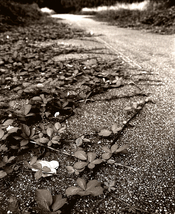Hi folks,
Usual noob disclaimer here: maybe i'm getting stuff ass-backward, so be gentle!
I have a few 35mm lens shots that i did on my Nikon F2, and i now want to repeat these with my RB67 Pro SD (for higher resolution).
My conundrum is which lens to get for the RB, the 65mm or the 75mm?
From googling, it seems the 75mm is listed as 36mm equivalent, so in principle, that's closer to the Nikon 35mm lens.
But 6x7 is a different aspect ratio from 35mm film cameras.
So does that mean that if i go for the 75mm, i'll actually loose some width in my shot? Or will i gain more height?
Sorry if this makes no sense and looking forward to your reactions!
(PS - below is one of the pix i want to re-take, if this helps)

Usual noob disclaimer here: maybe i'm getting stuff ass-backward, so be gentle!
I have a few 35mm lens shots that i did on my Nikon F2, and i now want to repeat these with my RB67 Pro SD (for higher resolution).
My conundrum is which lens to get for the RB, the 65mm or the 75mm?
From googling, it seems the 75mm is listed as 36mm equivalent, so in principle, that's closer to the Nikon 35mm lens.
But 6x7 is a different aspect ratio from 35mm film cameras.
So does that mean that if i go for the 75mm, i'll actually loose some width in my shot? Or will i gain more height?
Sorry if this makes no sense and looking forward to your reactions!
(PS - below is one of the pix i want to re-take, if this helps)





 , just ordered the lens from Ebay Japan, fingers crossed!
, just ordered the lens from Ebay Japan, fingers crossed! 

